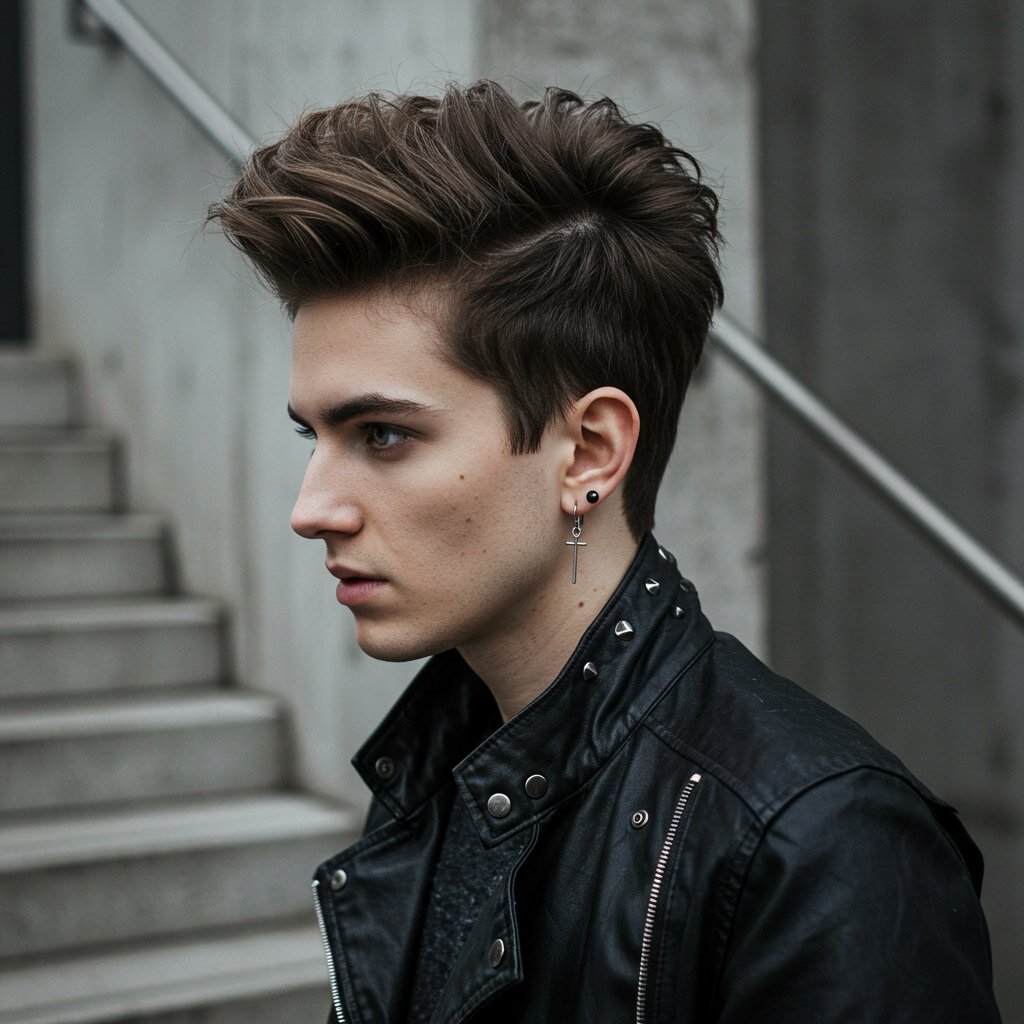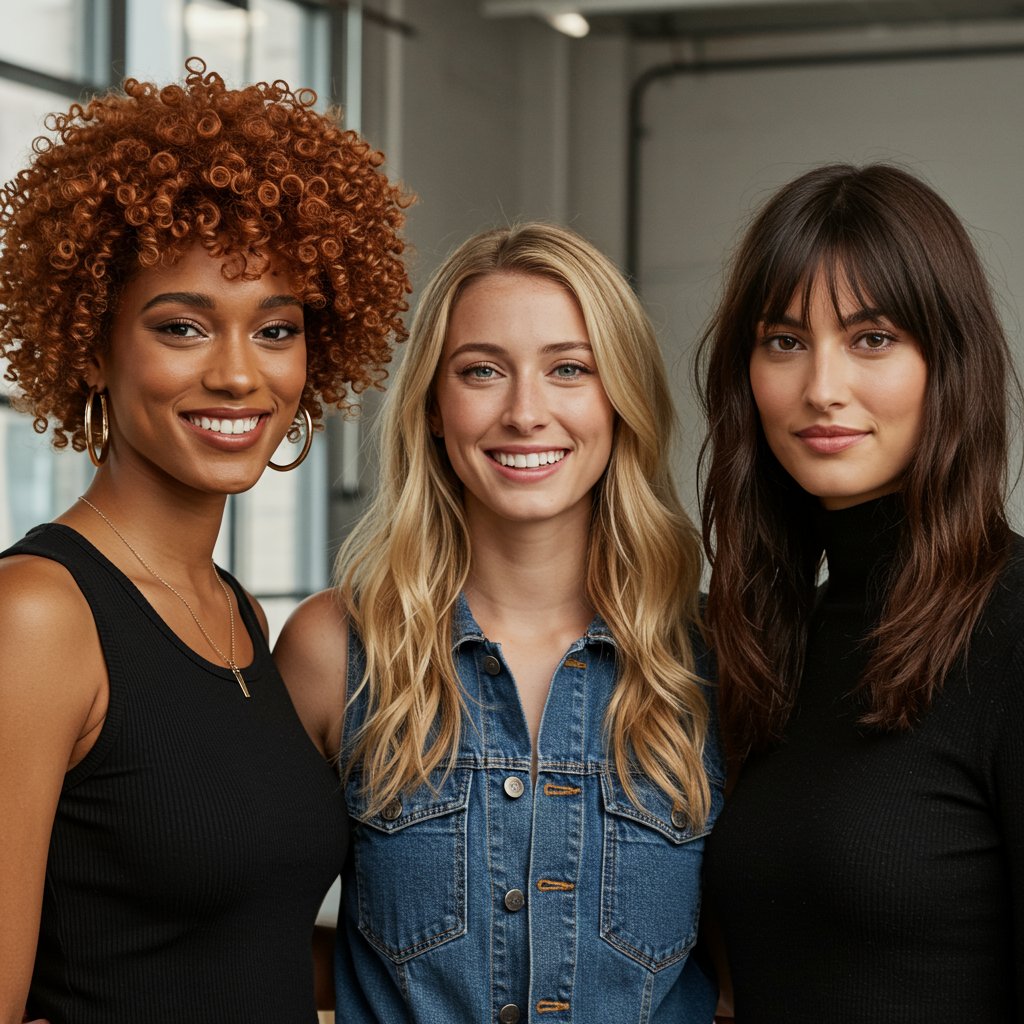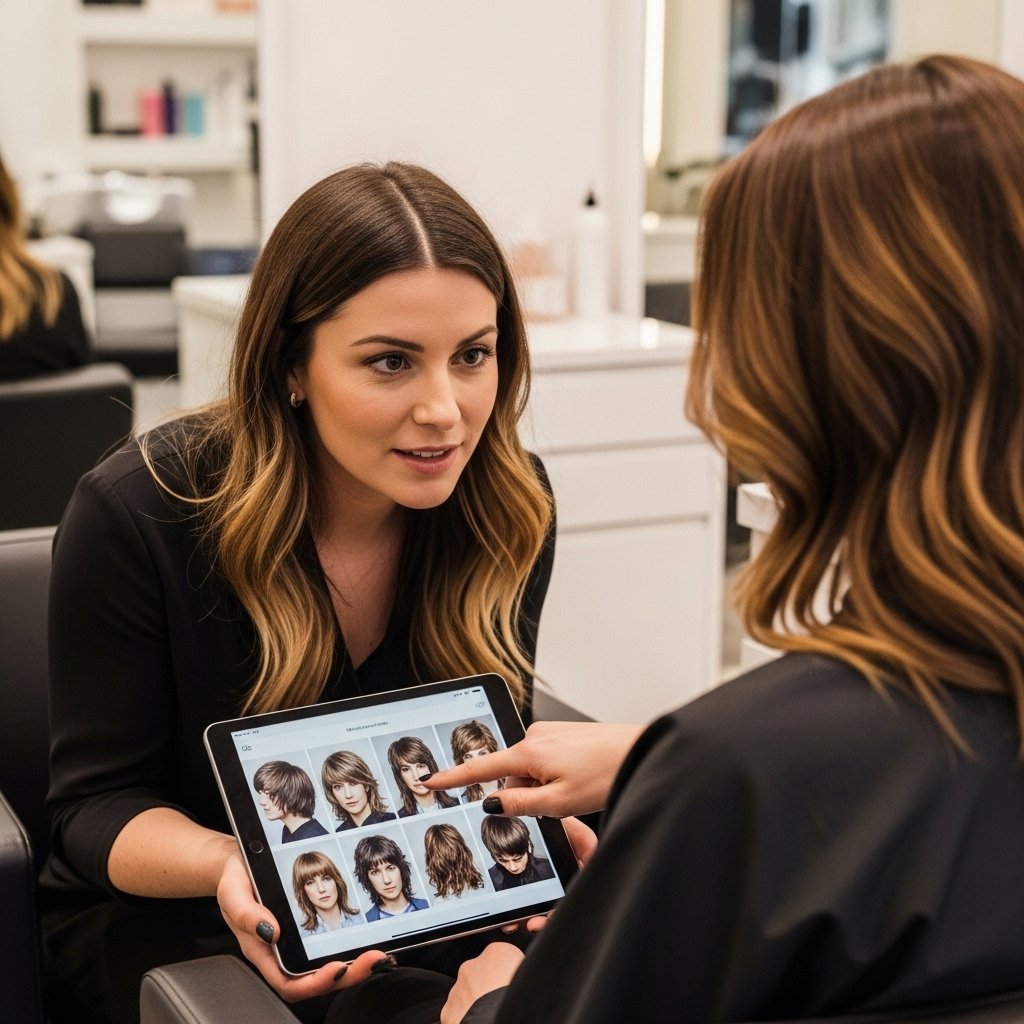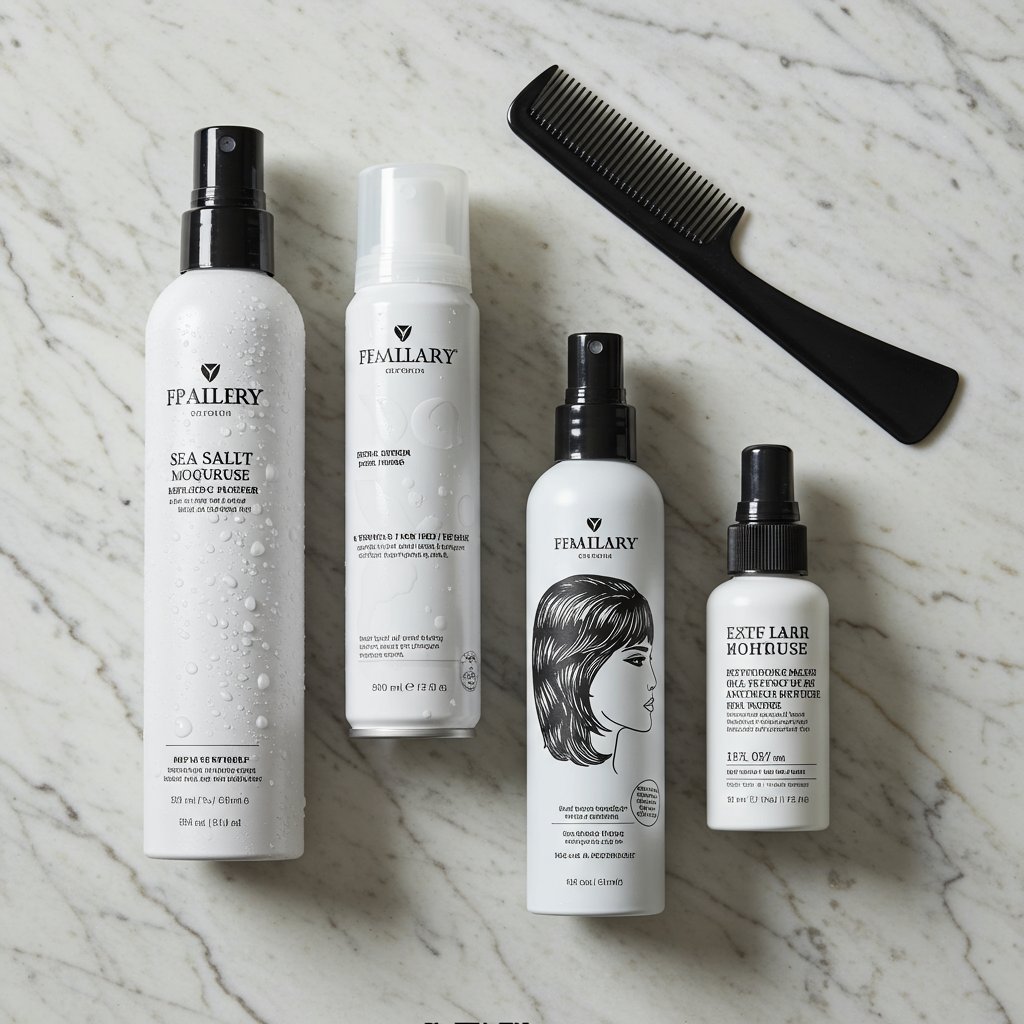The Shag Haircut: A Complete Guide From 70s Rock to Modern Texture
The Shag Haircut: The Enduring Appeal of Effortless Texture
Few hairstyles possess the rebellious spirit and timeless cool of the shag haircut. From its rock-and-roll roots in the 1970s to its modern resurgence on runways and city streets, the shag remains a symbol of effortless style and individuality. It’s more than just a haircut; it’s an attitude. Characterized by its choppy layers, textured ends, and significant volume around the crown, the modern shag haircut has evolved into a versatile style that can be tailored to suit any hair type, length, and face shape. This comprehensive guide will explore the rich history of the shag, break down its defining elements, and provide you with everything you need to know to embrace this iconic look, from finding the perfect variation to styling it with confidence.

What makes the shag so eternally popular? It's the perfect fusion of structure and chaos. The strategic layering removes bulk while creating incredible movement and body, making it an ideal choice for those looking to add life to limp hair or manage thick, unruly locks. Whether you’re drawn to the edgy vibe of a classic 70s shag, the softer romance of a shaggy bob, or the trendy appeal of its cousin, the wolf cut, there’s a version of this haircut waiting for you. Join us as we delve into the world of the shag, a haircut that has proven it’s not just a fleeting trend, but a permanent fixture in the hair fashion hall of fame.
The Birth of Rebellion: The Original 70s Shag Haircut
The 1970s was a decade of cultural upheaval, and fashion was no exception. As hemlines rose and fell, a new hairstyle emerged that perfectly captured the era's anti-establishment, free-spirited vibe: the shag haircut. Popularized by rock icons and Hollywood rebels, the original shag was unisex, untamed, and undeniably cool. It was a deliberate move away from the rigid, perfectly coiffed styles of the 1960s, championing a more lived-in, rock-and-roll aesthetic. Jane Fonda’s iconic mugshot in 1970 showcased a feathery, choppy shag that became instantly legendary, cementing its place as the haircut of the counterculture.
Musicians were instrumental in catapulting the shag to global fame. David Bowie, with his fiery red Ziggy Stardust mullet-shag, pushed the boundaries of gender and style. Joan Jett’s jet-black, razor-cut shag became synonymous with punk rock attitude, while Rod Stewart’s famously spiky version defined quintessential rockstar hair. The classic 70s shag was defined by its heavily layered top and crown, which created massive volume, contrasted with thinner, longer, wispy ends. The look was often paired with a heavy, full fringe or feathered curtain bangs that framed the face and drew attention to the eyes. It was a haircut that looked just as good on stage under bright lights as it did the morning after, embodying a sense of carefree rebellion.
Deconstructing the Shag: What Defines This Iconic Cut?
While the shag has evolved over the decades, its core DNA remains the same. Understanding its fundamental components is key to communicating with a stylist and finding the version that best suits you. The shag is a masterclass in controlled chaos, built upon three key pillars: layers, fringe, and texture.

The Signature Layers
At its heart, the shag haircut is all about layers—and not just any layers. Shag layers are typically shorter on top and around the crown, becoming progressively longer toward the ends. This technique is what creates the style's signature volume at the top and its lighter, piecey movement at the bottom. A skilled stylist will often use a razor or point-cutting technique to create these layers, which results in a softer, more feathered edge rather than a blunt line. This strategic removal of weight allows the hair to move freely and creates an effortlessly tousled look that is the hallmark of the shag.The Versatile Fringe (Bangs)
The fringe is an integral part of the shag aesthetic. The classic 70s shag often featured a full, heavy fringe, but modern interpretations offer endless possibilities. Curtain bangs, which are parted in the middle and sweep to the sides, are arguably the most popular pairing for a contemporary shag. They beautifully frame the face, highlighting the cheekbones and eyes. Other options include wispy, eyebrow-skimming bangs, short and choppy baby bangs for an edgier look, or even side-swept bangs for a softer feel. The right fringe can balance your face shape and tie the entire haircut together.The Focus on Texture and Movement
Ultimately, the goal of a shag haircut is to enhance and celebrate the hair's natural texture. It’s designed to look lived-in and move with you. The combination of varied layer lengths and feathered ends encourages waves, curls, and even straight hair to take on a new life. This is not a style that is meant to be perfectly sleek or static. The beauty of the shag lies in its imperfection and its ability to look effortlessly chic with minimal styling. It’s a wash-and-go style at its core, designed to be enhanced with a bit of product rather than forced into submission with heat tools.The Modern Shag Evolution: From Wolf Cut to Soft Shag
The 21st century has seen a massive resurgence of the shag, but with a modern twist. Today’s stylists have reinterpreted the classic cut, creating a spectrum of variations that feel fresh, current, and highly adaptable. The modern shag is less about a single look and more about a layered, textured philosophy that can be applied to almost any hair length or type.

The Wolf Cut: A Shag-Mullet Hybrid
The most talked-about modern variation is undoubtedly the wolf cut. This edgy style, which gained immense popularity through social media, is a bold hybrid of the shag and the mullet. It features the heavy, voluminous layers of a shag at the crown and the longer, disconnected length of a mullet at the back. The wolf cut is intentionally choppy and wild, often paired with heavy curtain bangs and styled to maximize texture. It’s a statement look that feels both retro and futuristic, appealing to those who want a haircut with a strong personality.The Soft Shag (or "Shaggy Bob")
For a less dramatic but equally stylish option, the soft shag offers a more subtle take on the trend. This version is often cut on shorter hair, from bob to lob length, and features gentler, more blended layers. Instead of the high contrast of the classic shag, the soft shag focuses on creating gentle movement and texture throughout the hair. It removes the weight from a standard bob, giving it an airy, lived-in quality that is incredibly chic and easy to manage. It's the perfect entry point for someone curious about the shag but not ready for a full-on 70s look.The Long, Flowing Shag
The shag is not just for short or mid-length hair. The long shag is a beautiful way to add shape and style to longer locks without sacrificing length. By incorporating face-framing layers and shorter pieces throughout the crown and mid-lengths, a stylist can create volume and movement, preventing long hair from looking flat or heavy. This version often features long, sweeping curtain bangs that blend seamlessly into the rest of the hair, creating a soft, romantic, and bohemian vibe that is both glamorous and low-maintenance.Is the Shag Haircut Right for You? Finding Your Perfect Match
The incredible versatility of the shag haircut means there is a version for virtually everyone. The key is to tailor the cut to your specific hair type, texture, and face shape. A consultation with an experienced stylist is crucial to achieving a shag that flatters you and works with your lifestyle.

For Fine Hair: Creating Volume
Fine hair can benefit immensely from a shag. The shorter layers on top instantly create lift and the illusion of thickness at the crown, where fine hair tends to fall flat. A shorter shag, like a shaggy bob or a cut that sits just above the shoulders, can make hair appear fuller. It’s important to avoid over-texturizing the ends, which can make fine hair look sparse. Instead, the focus should be on building volume at the root and through the body of the hair.For Thick Hair: Removing Weight
For those blessed with thick hair, the shag is a game-changer. The strategic layering is brilliant for de-bulking and removing excess weight, which can make thick hair feel heavy and unmanageable. The layers introduce movement and airiness, allowing the hair to fall in a more flattering shape. A razor cut can be particularly effective on thick hair, creating soft, tapered ends that prevent the style from looking bulky or triangular.For Curly and Wavy Hair: Enhancing Natural Texture
The shag and natural curls are a match made in heaven. The layers work with the curl pattern, not against it, allowing individual curls to pop and reducing the dreaded "pyramid" shape that can occur with one-length cuts. A shag can distribute volume, create a beautiful silhouette, and encourage curls to form without frizz. For curly shags, a dry cut is often recommended, as it allows the stylist to see how each curl falls naturally and cut the layers accordingly.Matching the Shag to Your Face Shape
A well-executed shag can balance and flatter any face shape. For round or square faces, a shag with longer, sweeping layers and a side part or soft curtain bangs can add length and soften angles. For oval faces, almost any version of the shag will work. For heart-shaped faces, a lob-length shag with layers that create volume around the chin can create a beautiful balance.The Salon Experience: What to Ask Your Stylist for the Perfect Shag
Achieving your dream shag haircut starts with a clear and detailed conversation with your stylist. This is a technical cut that requires a deep understanding of layering and texturizing, so seeking out a professional with experience in these styles is paramount. To ensure you leave the salon happy, come prepared. Bring multiple inspiration photos that show the shag from different angles. Be specific about what you like—is it the fringe, the amount of texture, or the overall shape? Discuss your daily routine and how much time you're willing to spend on styling. An honest conversation about your lifestyle will help your stylist create a shag that is not only beautiful but also practical for you. Don't be afraid to ask questions about how the cut will grow out and what the maintenance will look like. A great stylist will guide you through the process, offering their expert opinion on how to best adapt the shag for your unique features.

Styling Your Shag at Home: Tips and Product Recommendations
One of the greatest appeals of the shag is its low-maintenance styling. The haircut does most of the work for you, but a few key products and techniques can elevate the look and enhance its natural texture.

The Air-Dry Method
For an authentically effortless look, mastering the air-dry is essential. After washing, gently towel-dry your hair and apply a texturizing cream or mousse from roots to ends. Use your fingers to scrunch the hair and encourage its natural wave pattern. For the fringe or face-framing pieces, you can use your fingers to position them as they dry. The key is to avoid touching your hair too much as it dries to prevent frizz. Once dry, you can mist a sea salt spray or texture spray throughout for extra grit and volume.Diffusing for Curls and Waves
If you have natural waves or curls, a diffuser attachment on your blow dryer will be your best friend. After applying a curl cream or mousse, flip your hair upside down and gently cup sections of your hair in the diffuser. Use a low speed and medium heat setting to dry the hair, which will enhance your curl pattern and create incredible volume without causing frizz. Once it's about 80% dry, you can let the rest air-dry for a more natural finish.Product Essentials: Texture Sprays, Mousse, and Serums
The right products are crucial for a successful shag. A high-quality sea salt or texture spray is non-negotiable for creating that piecey, lived-in vibe. A lightweight mousse is excellent for adding volume at the roots before drying. For controlling frizz and adding a touch of polish to the ends, a small amount of smoothing serum or hair oil is perfect. For a second-day refresh, a dry shampoo or dry texturizing spray can instantly bring back volume and grit.FAQ: Your Shag Haircut Questions Answered
Q1: What's the difference between a shag and a wolf cut?
The main difference lies in the intensity of the layers and the overall shape. A wolf cut is a hybrid of a shag and a mullet, featuring very short, choppy layers on top and a longer, disconnected length in the back. A traditional shag has more blended, seamless layers throughout.
Q2: How often do I need to get my shag haircut trimmed?
To maintain the shape and keep the layers looking sharp, it's recommended to get a trim every 6-10 weeks. The fringe or bangs may require more frequent touch-ups, which some salons offer between full haircut appointments.Q3: Can I get a shag with fine hair?
Absolutely! A shag is one of the best haircuts for fine hair. The layers on top create significant volume and the illusion of thickness. A stylist will tailor the cut to ensure the ends don't look too thin, often opting for a shorter, bob or lob-length shag.Q4: Is the shag haircut high maintenance?
Styling-wise, it's considered low maintenance as it's designed to enhance your natural texture and look good a bit messy. However, it does require regular trims to maintain its specific shape, so it's not a 'get it and forget it' cut in terms of salon visits.Q5: What products are best for styling a shag?
Essential products include a texture spray or sea salt spray for grit, a mousse or root-lifting spray for volume, and a lightweight hair oil or serum to smooth the ends and fight frizz. A dry shampoo or dry texturizing spray is great for second-day styling.Q6: Does a shag work for professional environments?
The modern shag is incredibly versatile. While the edgier versions like the wolf cut might be better suited for creative fields, a soft shag or a long, flowing shag can look incredibly polished and sophisticated, making it appropriate for any professional setting.Conclusion: Embrace the Timeless Cool of the Shag
From its rebellious 1970s origins to its countless modern interpretations, the shag haircut has proven its remarkable staying power. It is a testament to the beauty of a style that prioritizes movement, texture, and individuality over rigid perfection. The shag is more than a trend; it's a versatile framework that can be customized to enhance your natural beauty, reflect your personality, and simplify your daily routine. Whether you opt for a bold, rock-inspired chop, a soft and romantic shaggy lob, or a long and flowing bohemian style, you are embracing a piece of hair history that is continually being rewritten. If you're ready for a change and want a haircut that is effortlessly stylish, full of life, and uniquely you, it might be time to talk to a professional stylist and finally take the plunge into the iconic world of the shag haircut.


